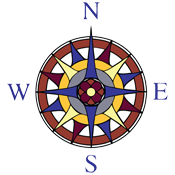Art History: Renaissance to Recent, Western Art Part 2 *ONLINE/TRANSITION*
Description:
Students will travel through time and around the world in this survey of the history of art! The class will look at images of art as religious icons, records of historical events, myths, portraits, propaganda, conveyors of power and authority, and fantasy to answer the big question, "What is the function of art aside from being aesthetically pleasing?" Students will be asked to predict how their definition of art will change throughout the course of the year.
This unique exploration of art history will be enlivened by rich class discussions, projects, visits to exhibits, and the instructor's own creative style and personal experience at significant historical sites throughout the ancient world. Students will learn about the people and concepts behind each type of art, considering that the conditions of the time influenced the art and architecture: physical location, settlement, innovation, warfare, politics, beliefs, religion, funerary practices, and interconnections to other, contemporary cultures.
This study of the history of art will begin with the early Renaissance in Northern Europe and the innovation of oil painting. This technique was used to evoke different ideas in Burgundy, Flanders, France and the remains of the Holy roman Empire. Students will discover how etching and engraving are different and explore the illustration of printed books. Next, the investigation turns to Quattrocento Florence and the influence of Humanistic principles and innovations in perspective. Women's participation in Italian art during the High Renaissance will be introduced through the works of several female artists. The allegorical symbols and minute details of the North will be contrasted with the joyful mythologies of Italy. The class will then examine the changes brought about by Mannerism, and how these were expressed in both Italy and the North, as well as the difference in focus of Protestant and Catholic artists. Looking at spectacular Baroque art, the class will discuss the continuation of patronage with an art market and without royalty. The study of the Dutch vanitas paintings will open a discussion of the importance of the household and of personal contribution to society and science. After a century of revolutions, European art has a quick dalliance with the Rococo, then the enlightenment focuses artists on a more austere neoclassicism. Next, the exploration will take students to the effects on art of the Industrial Revolution through materials, technologies and subjects. Students will learn about the political and artistic revolutions that led to the Romantic spirit, the Realist reaction against Romanticism, and how landscape painting was somewhere between the two. The 19th century brings the first public art museum, prefabricated architecture, and the advent of photography. Finally, we will investigate the end of the 19th century and the beginning of Modernism in art: Impressionism, Post-Impressionism, symbolism, and the first skyscrapers.
Levels:This course is AP Optional for students who took the prior semesters in 2019-20. All four Compass semesters are needed to prepare for the 2020 AP Art History exam.
Note:All class meetings will be in a virtual classroom, providing synchronous online instruction via videoconferencing for fall semester. At the instructors' option, the class may transition to in-person instruction for second semester as COVID-19 scenarios improve.
Topics in this Series: Renaissance to Recent, Western Art Part 2 (Semester 1), Asia to Africa, Non-Western Art (Semester 2)
Workload: AP students should expect to spend 2-3 hours per week outside of class; on-level students should expect to spend 1 hour outside of class.
Assignments: The Canvas online class management system will be used to post assignments, quizzes, and scores. Students should have their own e-mail address to be set up users of the Canvas system. Parents can also be set up as Canvas guests/observers for purposes of tracking the student's progress and workload. For each chapter, there will be open book quizzes, and students should be able to describe their three favorite works. There will be a semester project based on the creation of one's own myth and culture. Image recognition is key to learning art history. Each semester, students will be assigned approximately 60 images to identify (25% of the AP's 250) on the midterm and final. On-level students should be able to identify the art or object by style. AP students are expected to learn the name, description and compare/contrast the images.
Assessments: Points will be assigned for projects, quizzes, chapter summaries, and exams, and parents may use the total points earned to assign a class grade. Quizzes will be administered through Canvas.
Textbook: Students should purchase or rent Gardner's Art through the Ages: A Global History, 15th Edition by Fred Kleiner (ISBN 13- 978-285754994).
AP Fees: The fee to take the College Board's AP Art History exam in May 2021 is not included; each family will be responsible for scheduling and paying for their student's AP exam
Credit:Homeschool families may wish to count this course as a component (partial) credit in History or Fine Arts for purposes of a high school transcript.
We are sorry but registration for this event is now closed.
Please contact us if you would like to know if spaces are still available.

